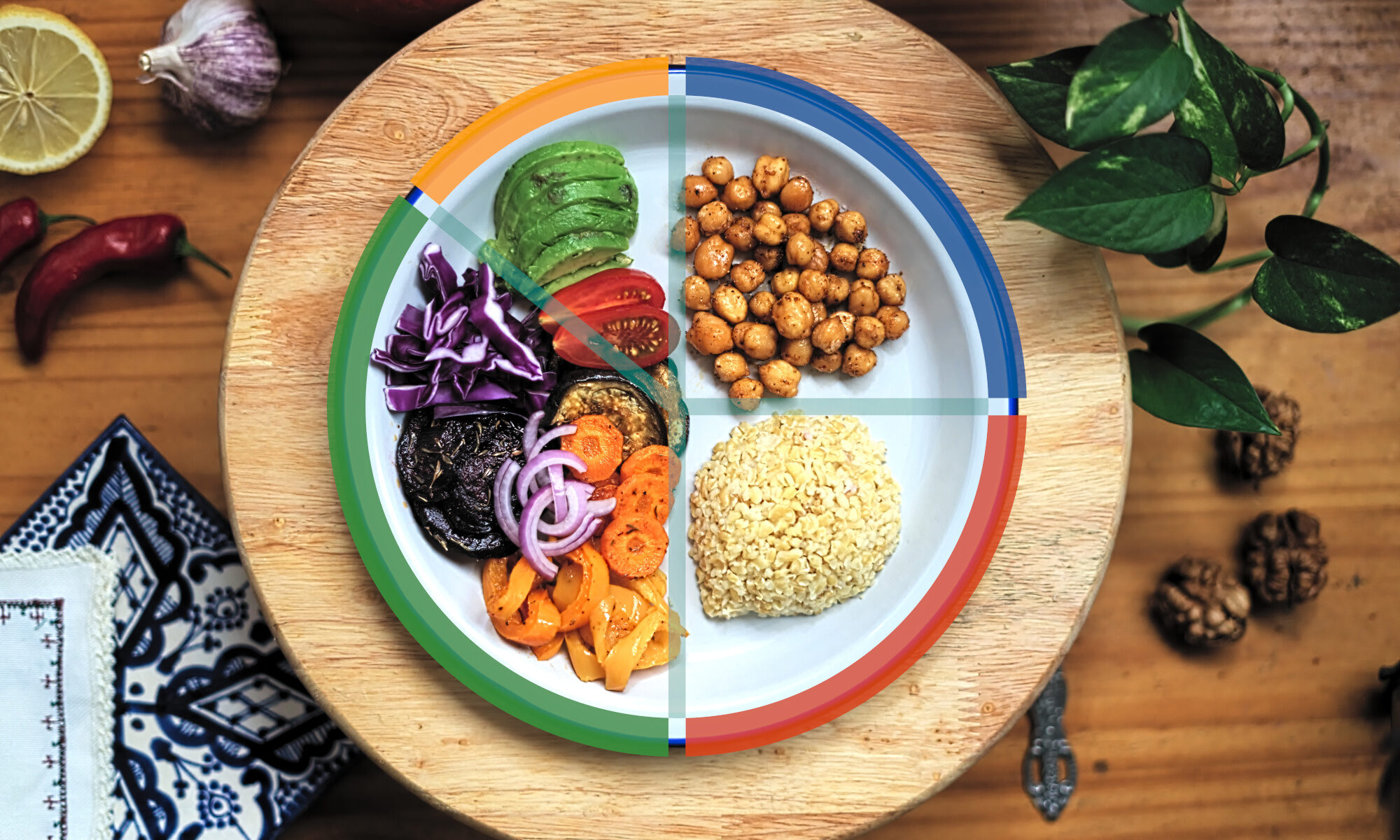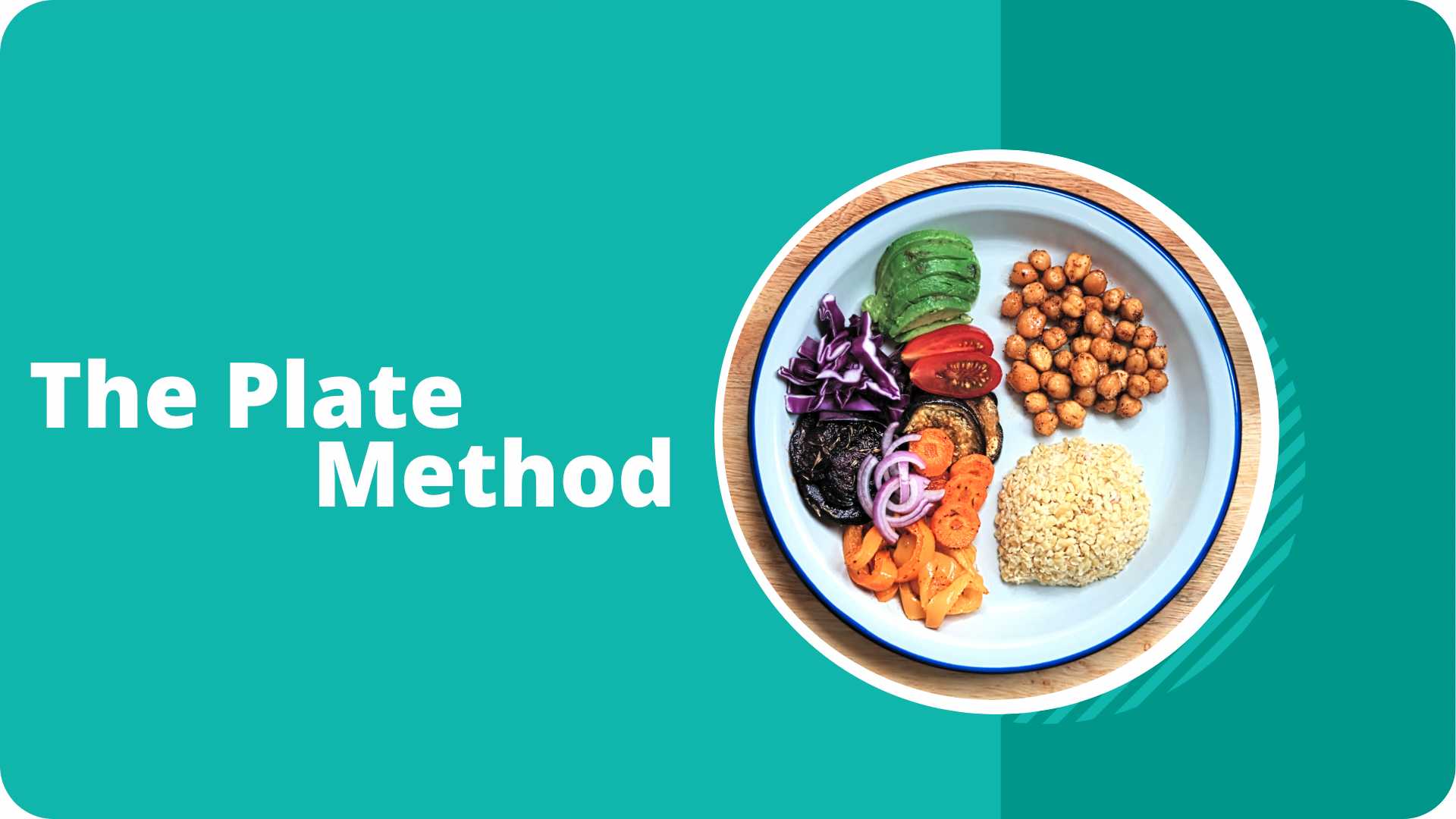The Plate Method: A simple way for healthy eating
What’s the Plate Method?
The plate method is a simple way to achieve well-balanced meals. It uses a plate for visual guidance to compose a healthy meal.

The plate method was first described in Sweden for diabetes meal planning. Many institutions adapted the plate method as an educative tool to prevent diabetes and heart disease and promote healthy nutrition.
The plate method is recommended in food dietary guidelines by the USDA’s MyPlate and Canada’s food guide.
How to use the Plate Method?

Start by choosing the plate. The recommended plate size is 9 inches (23 cm), but you can use a bigger or smaller plate depending on your needs.
Divide the plate into three zones:
- 1/2 of the plate: Vegetables and fruits.
- 1/4 of the plate: Whole Grains.
- 1/4 of the plate: Proteins.
Vegetables and fruits
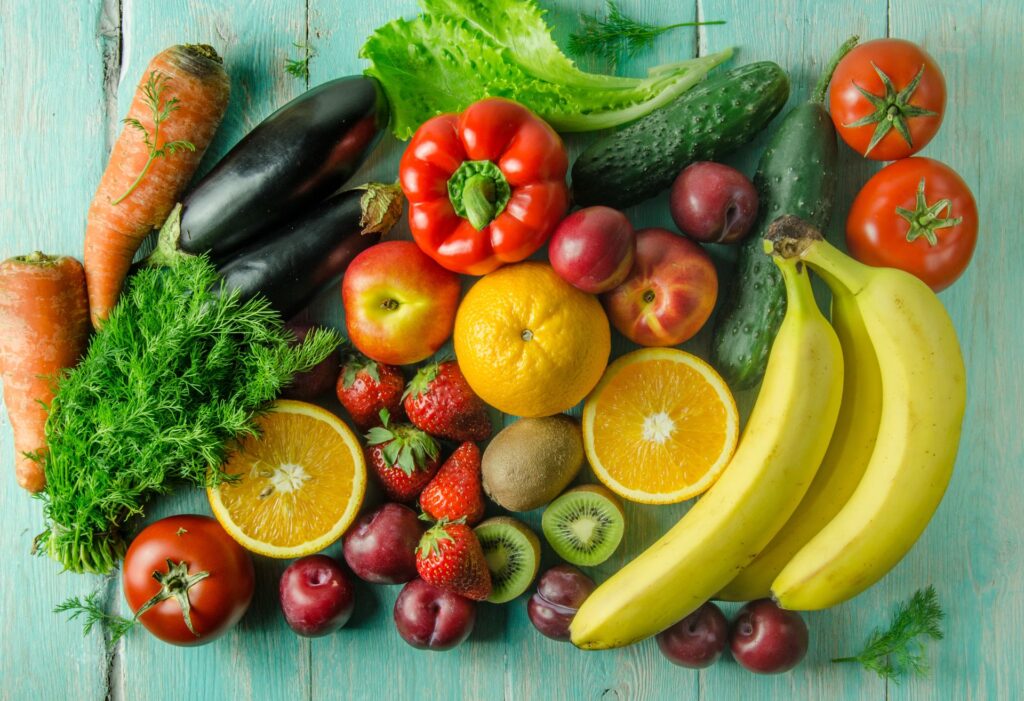
Vegetables and fruits are sources of vitamins, minerals and fiber. Fill half of the plate with various non-starchy vegetables and fruits and aim for the vegetable part to be bigger than the fruits. Non-starchy vegetables like broccoli, aubergine and zucchini are lower in carbs and calories and have a lower impact on blood sugar. Starchy vegetables such as potatoes can be added to the Whole grains zone of the plate.
Whole grains

Fill 1/4 of the plate with whole grains foods like barley, brown rice, bulgur and quinoa. Whole grains are seeds that retain all their parts (bran, germ and endosperm). They are a high-quality source of carbohydrates, rich in fiber, B vitamins and minerals.
Unlike refined grains (white bread, white rice, …), whole grains maintain a steady level of blood sugar and prevent spikes thanks to their components (bran and fiber), which slow down carbs’ breakdown into glucose.
Proteins
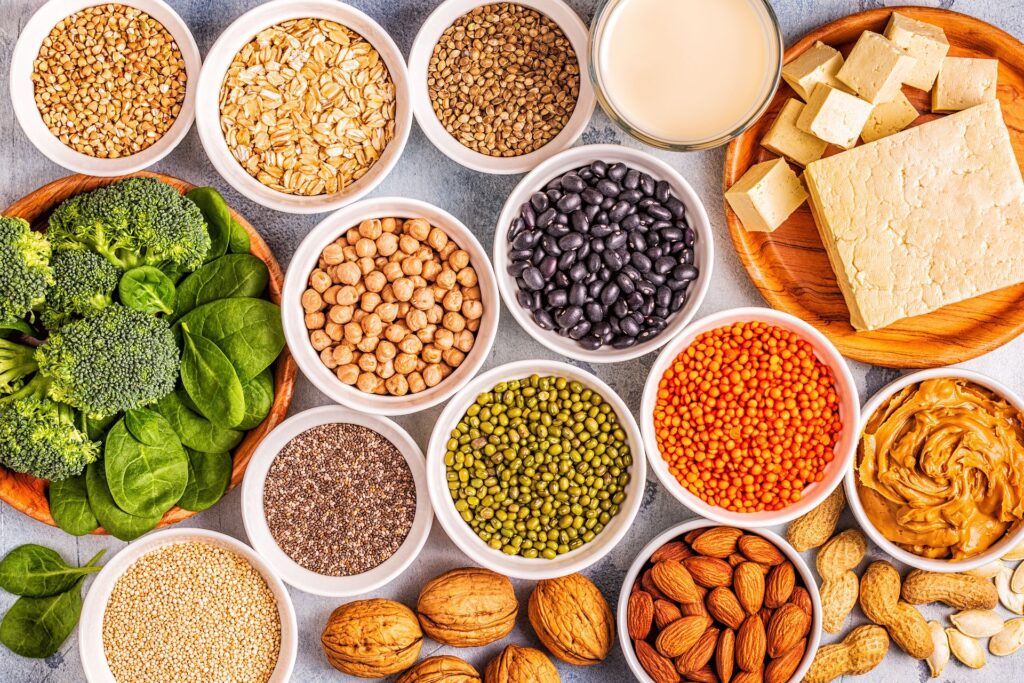
Fill the remaining 1/4 with protein foods. Proteins include animal sources like meat, poultry, fish, eggs and dairy products. They also can be plant-based, such as lentils, nuts, seeds and soy foods.
Plant-based protein foods provide more fiber and minerals and are lower in saturated fats, which affect cholesterol blood levels positively. When choosing animal protein sources, aim for lean and low-fat meats, limit red meat and avoid processed meats like hot dogs and bacon.
Grains (millet, oats, cashews, … ) and some vegetables (broccoli, spinach, asparagus…) are also sources of proteins in smaller amounts.
Healthy fats
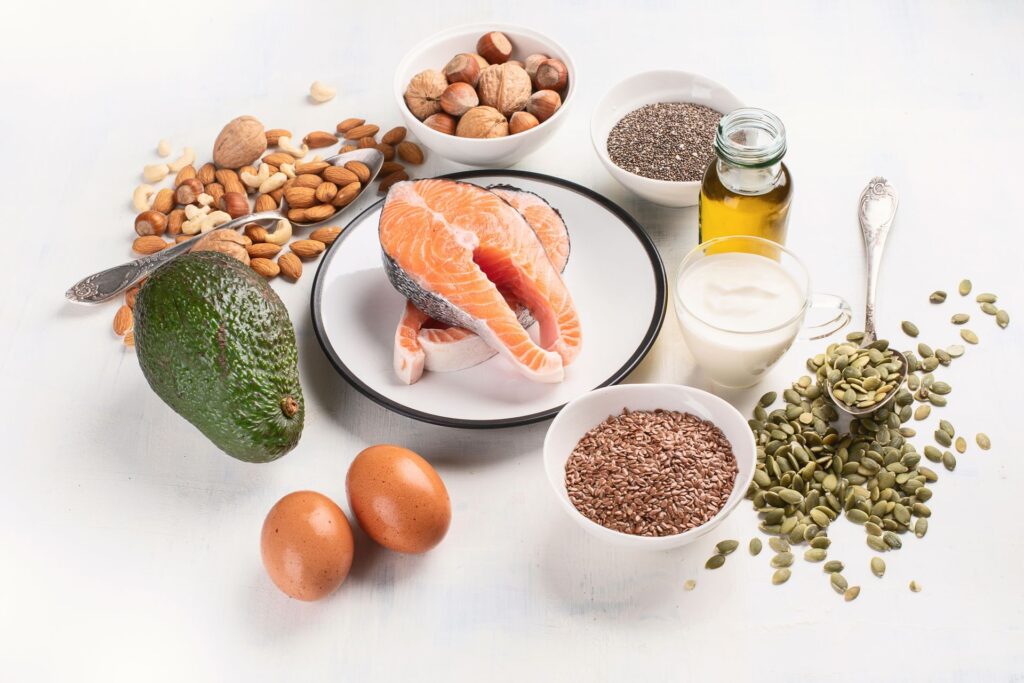
Fats are an essential element of any balanced diet, as long as they are healthy and used in moderation.
Make plant-based fats such as olives, avocados, nuts and seeds a part of your plate. These fats (unsaturated fats) have beneficial health effects.
When adding animal foods to your plate, be aware of the hidden fats. Meats and dairy products are high in fats (saturated fats) that can raise cholesterol levels and increase the risk of heart disease.
Avoid ultra-processed foods. They usually contain harmful fats (artificial trans fats). These fats can increase the risk of health problems like heart disease and inflammation. Unhealthy fats can be found in various products such as fried fast foods, bakery products and frozen pizza.
Water

The ideal drink you can associate with your meal is a glass of water. Avoid sugary drinks (soda, fruit juice, diet drinks, … ) as they are loaded with empty calories and have no nutrition benefits.
What are the benefits of the Plate Method?
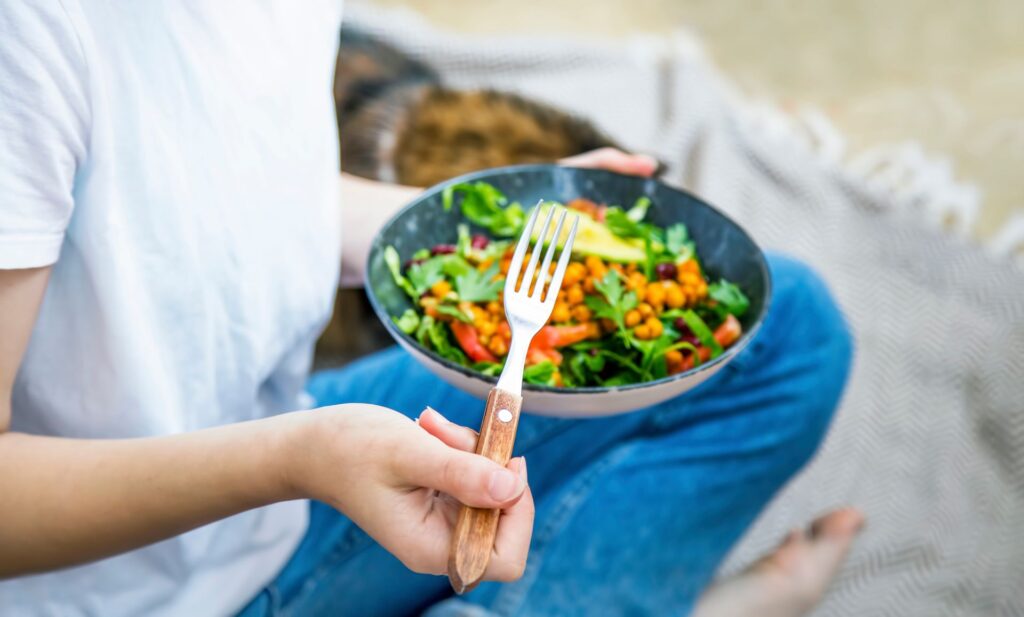
The plate method is simple, flexible and easy to use. It doesn’t require calculating, calorie counting, food weighing or servings measuring. It is a stress-free tool for people who want to build awareness of their eating habits.
The plate method focuses on whole food and a quality diet. It doesn’t promote restrictive diets. The plate method helps compose balanced meals, including various foods from different sources.
The plate method can also be used as a weight management tool by controlling portions and eliminating empty calories foods and unhealthy fats. The recommended plate size is a 9 inches plate (23 cm), but you can use a bigger or smaller plate depending on your needs.
The plate method is suitable for everyone. Whether you are a meat-eater, a vegetarian or a vegan, what you eat will fit on the plate.
When combined with regular physical activity, the plate method can help build a healthy and balanced lifestyle.
Expending the Plate Method
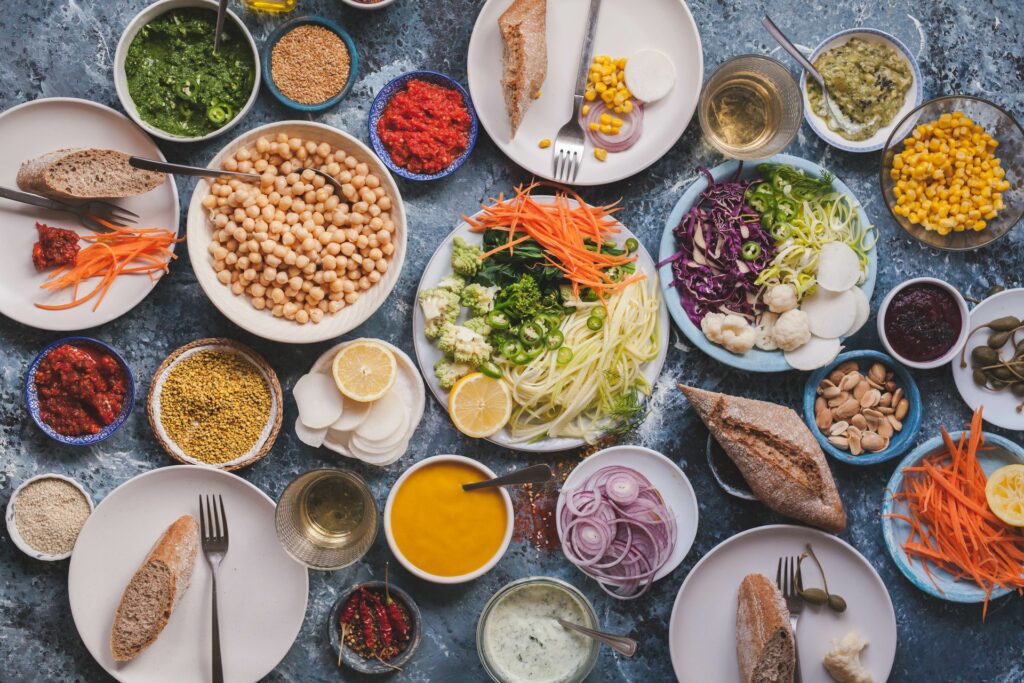
Although the plate method is usually represented on a single dinner plate, it can be applied to any meal (breakfast, snack). The plate proportions can be used as a reference to compose all dishes.
You can expend the plate method and apply the logic of the plate to multi-course meals, one-pot foods, Buddha bowls, soups and sandwiches.
The plate method can also apply to various food cultures: Indian dhal, Mexican chilli and Spanish tapas.
The plate method will help you stick to long-term and sustainable eating habits.
